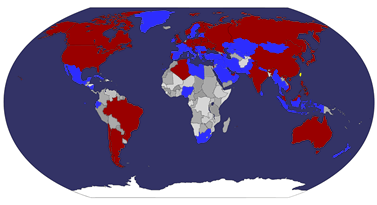700th ANNIVERSAIRE De l'ORDRE De CLARES PAUVRE DANS le SPLIT


"The ancient monastery of St. Clare in Split, dating from the year 1308, celebrates this year the seven-hundredth anniversary of its foundation, being maintained and permanently renewed through the stormy centuries of our history by the influx of new vocations. When the seraphim father, St. Francis of Assisi, the founder of three orders, overcome by the love of God, drew along with him Clara Sciffi, a girl from a noble family of Assisi, she followed the example of St. Francis and renounced the “world“ – enclosing herself by the walls of San Damiano monastery – so that she could freely elevate her spirit to God and serve him in all her humility, self-denial and love, encompassing in her overall sacrifice the whole world and praying for it. Thus in the year 1212 in Assisi the Order of St. Clare or Order of Poor Sisters, or the Clarisses was founded, that represents the Second Order of St. Francis, and that is completely dedicated to contemplative life, following the Clare’s Rule, which was approved by Pope Innocent IV, i.e. Pope Urban V. Soon the Order started spreading over Italy and other European countries because Clara’s charisma and Claras’s example, on whose face and spiritual image the “radiance of Glory” was shining permanently, attracted many young girls. As early as the mid 13th century in Croatian regions convents started to be built where the spirits of Francis and Clare were blossoming. The convent in Split can be numbered among the oldest convents of the Poor Clares, being founded at the beginning of the 14th century. However, as Napoleon’s laws and decisions of the Austrian emperor Joseph II all other monasteries of the Poor Clares along the Adriatic coast and in Slovenia were abolished, the convent in Split was the only one that could withstand all trials throughout the centuries. We have two precious documents – decrees – set out in Daniel Farlati’s grandiose work Illyricum Sacrum, that refer to the founding of the convent and the consecration of the convent church. The nobleman from Split, Josip Petar, after getting terminally ill, owing to inspiration left in his last will a money bequest according to which a Poor Clare’s convent was to be built in Split where the devoted virgins would “serve the God of chastity” for all times and glorify His holy name. After the convent was built in 1308, a church was built next to it and it was consecrated by archbishop Petar IX at the beginning of the year 1311 in the presence of the whole Chapter and the citizens of Split, when he bestowed many benefits upon the convent. This took place during the pontificate of Pope Clement V (1305 – 1314), at the time when these lands were ruled by Ban Pavao Šubić, Count of Split and Trogir, master of Omiš then master of the whole of Croatia, Dalmatia and Bosnia. The first convent building was raised on the coast, near the city gates. At the time of the Venetian rule, in 1424 the convent was moved to the south-eastern part of Diocletian’s Palace. On the site of the former convent the Venetians built a fortified citadel. The convent of the Poor Clares was closely linked to the life of the city of Split, which can be proved by the fact that the city in the second half of the 13th century was divided into four city districts and one of them was named St. Clare’s district. Remaining calm and rooted into their faith in God, the Poor Clares had to undergo many demanding tribulations in the course of the watershed centuries and difficult historical events, depending on God’s providence and protection. The hardest time was the time of the great epidemics. So, in 1529, at the time of the plague in Split, all the nuns in the Benedictine monastery of St. Mary in the city died while the Poor Clares survived. Enshrined behind the walls they followed the fate of their folk and their martyrdom offering themselves as redemption of many and for their salvation – temporal and eternal. In 1783 the plague struck the Poor Clare’s convent too; three sisters died then and the convent archive was burnt down. In the 19th century, at the time of the Austrian rule, the Poor Clare nuns were forced to establish a school and teach there. In 1824 the first girls’ elementary school was thus opened in Split and following it also a teachers’ school (Scuola di Metodica e Pedagogica) and a boarding school for female pupils. These schools were exemplary and the Poor Clares have indebted the city; the abbes and headmistress, s. Terezija Riboli had the order of Emperor Francis Joseph I conferred upon her. The third convent building, the current one is situated in Lučac. The community of nuns moved to it in the year 1883. It was built owing to the endeavours of the nun, s. M. Klara Linardović and the Bishop of Split, Marko Kalođera. The building within the walls of the Diocletian’s Palace was too tight and in an unhealthy place so that the nuns died before their time. Consequently, the new building was built outside the city walls, in a free space. This place is nowadays in the very centre of the city. At the time of the Second World War four nuns of the Poor Clares founded a new convent in Samobor near Zagreb. Some among them, however, left Zagreb and went to Slovenia and founded a new monastery in Nazarje. In the year 1989 four sisters from the Split convent founded a monastery in Bosnia, in Brestovsko near Kiseljak. Otherwise, every convent is autonomous with their own authority and administration, under the jurisdiction of the bishop and under the spiritual leadership of the Franciscan brothers. Young girls at the age from 16 to thirty years of age can be accepted as members. The Poor Clare sisters in their life and work consider God as the primate in everything; their sacrifice means rites of prayer burnt for the redemption of the world, in unity with Jesus Christ’s sacrifice. The Poor Clares pray and sacrifice themselves for the salvation of the whole humankind, particularly of our people. They follow the spirituality of Francis and Clare, i.e. the Franciscan spirituality, whose common denominator is Christocentrism: the Christ of Bethlehem, Christ of the Calvary and Christ of the Eucharist. The sisters get up at midnight to pray and in harmony with the old nuns’ habit they leave for the choir, for prayers, seven times a day. They are engaged in needlework, baking host wafers and other activities. In 1975 the St. Clare convent in Split started their independent collection of ascetic-mystic works, under the leadership and initiative of sister Marija of the Most Holy Heart who is the editor of these editions. There are some hundred works of the classics of Christian spirituality published so far. Presently there are 20 Poor Clare sisters in the convent, and their abbess is s. M. Suzana Muzuković who is supported in running the convent by the so called Discretorium. Archbishop Monsignor Dr.Frane Franić often used to point out the role of this convent, mentioning that it is “the soul of the city and the soul of the soul of the religious orders”. We continue praying that it should be the City built on the mountain or like a lighthouse that should permanently stand on a height and illuminate the paths leading to the haven of eternity."-Croatia Posta









.jpg)























 taiwan
taiwan  cover or postcard
cover or postcard  FDC
FDC 






























































































1 comment:
Nice blog! I like it.
Regards,
Alexander (St.Petersburg)
www.used-covers.blogspot.com
Post a Comment